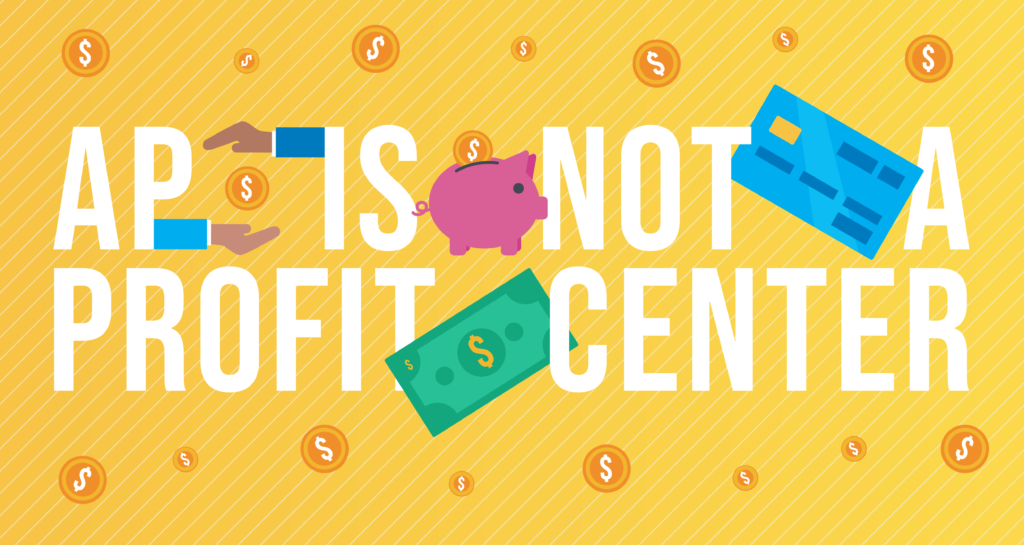AP is Not A Profit Center – Supplier Relationship Management Done Right

By Ernie Humphrey, VP, Thought Leadership, Stampli
Lowering payments processing costs via AP automation can have a meaningful impact on a company’s bottom line, and help AP get the attention it deserves. These costs can be dramatically lowered by converting suppliers to being paid via electronic payments from checks and by paying suppliers via card payments using cards that offer rebates for use. That is the good news. The bad news is that many companies are being told by certain AP automation solution providers that by cajoling enough suppliers to take certain types of virtual card payments, that accounts payable can become a profit center via rebates based on the dollar amount of payments made using these virtual cards. That is a bridge too far. That mindset can not only lead to damaged supplier relationships which negatively impact the bottom line, but also can slow and even reverse the progress that has been made in accounts payable in being viewed as more than a cost center.
There is no doubt value for a company to take more control of how they make payments to suppliers. There are meaningful cost savings to be had by converting suppliers from being paid by check to being paid via an electronic payment whether that be an ACH or some form of card payment. This can be done by working with suppliers to educate them as to the costs and benefits to them in accepting certain payment types and offering them your recommendation without pushing them to an electronic payment type that is best for you and offers your company a rebate. Supplier relationships matter and damaging them by forcing/strongly suggesting suppliers be paid on your terms can “inhibit company growth.” Those are words that will make any CFO cringe.
Investing in supplier relationships can offer companies the opportunity to work with suppliers to determine the type of payments that make sense for both parties.
I want to share seven supplier management best practices:
- The On-boarding Process – make it a seamless experience.
- Educate Suppliers – on the benefits of electronic document exchange, electronic payments, payment timing.
- Supplier Contracts – pay attention to terms including the payment terms (types and timing).
- Maintain Open Lines of Communication – minimize response times to supplier inquiries.
- Minimize the Asymmetry of Information – between your employees and your suppliers
- Provide Pro-active and Consistent Support for each Supplier Relationship.
- Visibility into Communications with Suppliers – leverage technology that offers a 360-degree view of supplier relationships.
The following offers three tips to use when discussing the type of payment that makes the most sense for a supplier:
- Communicate and understand your supplier’s cost of accepting payment types.
- Identify the conversion type that makes the most sense to a supplier: Check to ACH, Check to Commercial Card, etc. Certain companies are further along than others in terms of the technology and culture, so it may be that an initial step is converting a company from a check to an ACH payment and then down the line converting them from an ACH payment to a commercial card payment that can offer your company rebates that you could share with the supplier.
- Communicate the benefits for a supplier to convert to a desired payment type. AP done right on your side can translate into AR done right for your supplier. A supplier can realize lower AR processing costs and they can benefit from knowing when they will receive a payment in terms of improved working capital management.
Accounts payable can and should be viewed as a strategic function. However, accounts payable should not be viewed as a profit center. Rebates from card payments offer value, but at what cost? Damage to supplier relationships will occur when suppliers realize or feel they are forced to accept a card payment. Supplier relationships matter and companies should invest in each one of them by being a good customer.